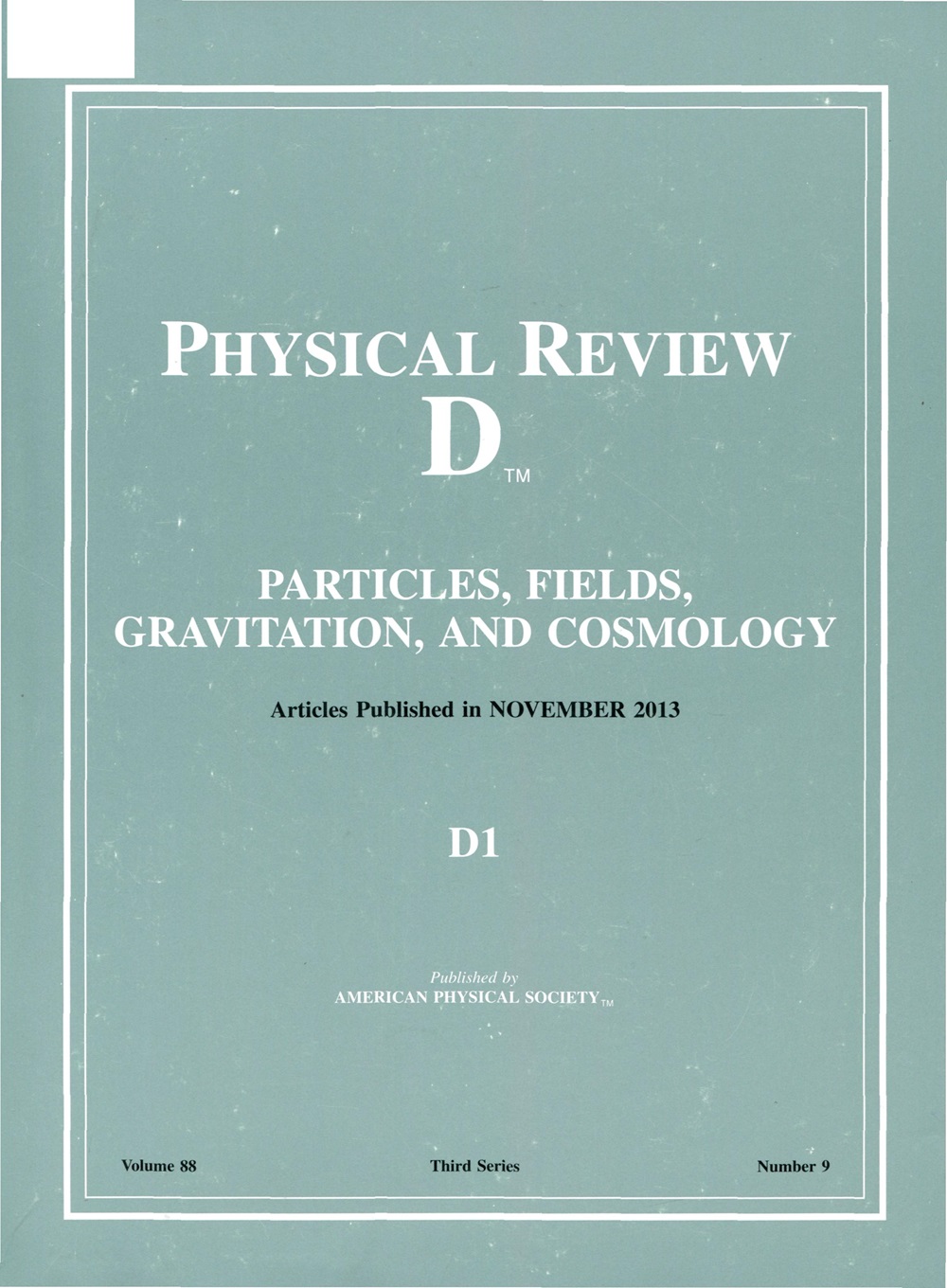用暗物质伪装混合恒星
IF 5
2区 物理与天体物理
Q1 Physics and Astronomy
引用次数: 0
摘要
我们研究了暗物质对混合恒星的影响。使用双流体方法,其中正常和暗物质组分仅在引力作用下相互作用,我们探索暗物质如何触发中子星中前所未有的低质量夸克物质的出现。我们的发现表明,暗物质增加了中子星的中心压力,即使在非常低的致密恒星质量下,也可能导致具有夸克核的混合恒星的形成。夸克物质出现的临界质量随着暗物质含量的增加而降低。我们引入了“伪装混合恒星”的概念,其中暗物质混合恒星表现出与纯强子恒星相似的质量半径关系,使得仅根据这些参数区分它们具有挑战性。此外,我们确定了一类被称为“暗牡蛎”的独特物体,其特征是一个大的暗物质晕和一个小的正常物质核心,突出了受暗物质影响的致密恒星的多种结构可能性。2025年由美国物理学会出版本文章由计算机程序翻译,如有差异,请以英文原文为准。
Masquerading hybrid stars with dark matter
We investigate the influence of dark matter on hybrid stars. Using a two-fluid approach, where normal and dark matter components interact only gravitationally, we explore how dark matter can trigger the appearance of quark matter in neutron stars for unprecedented low masses. Our findings reveal that dark matter increases the central pressure of neutron stars, potentially leading to the formation of hybrid stars with quark cores even at very low compact star masses. The critical mass for the appearance of quark matter decreases with increasing dark matter content. We introduce the concept of “masquerading hybrid stars,” where dark matter admixed stars exhibit similar mass-radius relations to purely hadronic stars, making it challenging to distinguish between them based solely on these parameters. Additionally, we identify a unique class of objects termed “dark oysters,” characterized by a large dark matter halo and a small normal matter core, highlighting the diverse structural possibilities for compact stars influenced by dark matter. Published by the American Physical Society 2025
求助全文
通过发布文献求助,成功后即可免费获取论文全文。
去求助
来源期刊

Physical Review D
物理-天文与天体物理
CiteScore
9.20
自引率
36.00%
发文量
0
审稿时长
2 months
期刊介绍:
Physical Review D (PRD) is a leading journal in elementary particle physics, field theory, gravitation, and cosmology and is one of the top-cited journals in high-energy physics.
PRD covers experimental and theoretical results in all aspects of particle physics, field theory, gravitation and cosmology, including:
Particle physics experiments,
Electroweak interactions,
Strong interactions,
Lattice field theories, lattice QCD,
Beyond the standard model physics,
Phenomenological aspects of field theory, general methods,
Gravity, cosmology, cosmic rays,
Astrophysics and astroparticle physics,
General relativity,
Formal aspects of field theory, field theory in curved space,
String theory, quantum gravity, gauge/gravity duality.
 求助内容:
求助内容: 应助结果提醒方式:
应助结果提醒方式:


